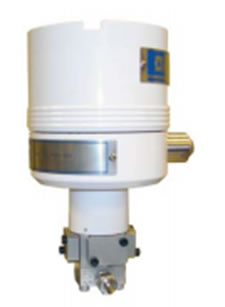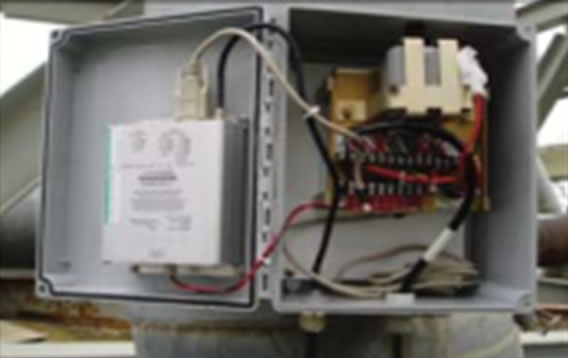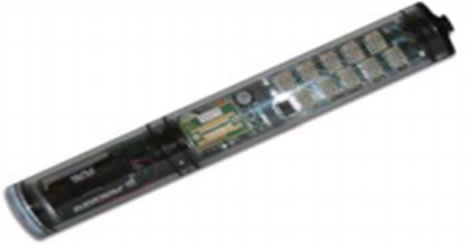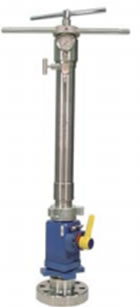SERVICES
|
|
 |
|
 |
|
 |
|
 |
|
 |
|
 | |
 | |
 |
|
 |
|
 |
|
 |
|
 |
|
 |
|
 |
|
|
|
|
|
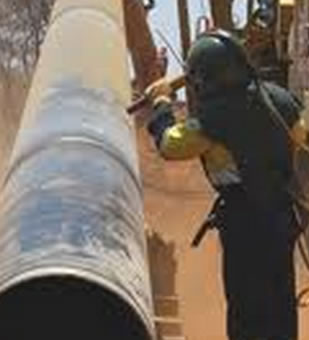 |
Products
Engineering Procurement & Construction
IOS has extensive experience providing EPC services throughout all of Iraq .With our best in class engineering services, decades-long ties with third-party suppliers, and strong relations amongst local Iraqi construction resources, we are able to provide our clients with full turnkey EPC solutions.
IOS produce either a welded or seamless pipe. Raw steel is first cast into a more workable starting form. It is then made into a pipe by stretching the steel out into a seamless tube or forcing the edges together and sealing them with a weld. The first methods for producing steel pipe were introduced in the early 1800s, and they have steadily evolved into the modern processes we use today. Each year, millions of tons of steel pipe are produced. Its versatility makes it the most often used product produced by the steel industry. There are three processes for metallic pipe manufacture. Drawing a solid billet over a piercing rod to create the hollow shell forms seamless pipe. Seamless pipe provides the most reliable pressure retaining characteristics, and is often more easily available than welded pipe. Welded (also Electric Resistance Welded (ERW) and Electric Fusion Welded (EFW)) pipe is formed by rolling plate and welding the seam. The weld flash can be removed from the outside or inside surfaces using a scarfing blade. The weld zone can also be heat treated, so the seam is less visible. Welded pipe often has tighter dimensional tolerances than seamless, and can be cheaper if manufactured in the same quantities. Large diameter pipe (about 10 inches or greater) may be ERW, EFW or Submerged Arc Welded (SAW) pipe.
INTEGLOABAL OIL SERVICES drilling rig is designed and manufactured according to the principle "advanced performance, reliable operation, convenient mobilization, economic operation and meeting middle east requirements". The performance and quality has reached or are beyond the advanced level of international similar drilling rigs.
The core drilling bits supplied by (INTEGLOABAL OIL SERVICES) are designed for coring operations in the Mineral Exploration, Gas and Oil, and Geotech Industries. The core-drilling bit disintegrates only the circumferential surface of bottom hole, whereas its central part (core) remains intact.
Adapters - Casinghead
Adapters - Tubinghead
Ball Valves - Full Opening
Bell Nipples
Bull Plugs
Casingheads
Casing Spools
Chokes - Positive
Chokes - Manual Adjustable
Chokes - Hydraulic
Flanges - Companion
Flanges - Weldneck
Flow Tees
Gauges
Gate Valves - Manual
Gate Valves - Dual
Gate Valves - Actuator
Landing Bases
Nipples
Primary Seals
Ring Gaskets
Secondary Seals
Slip Assemblies
Stripper Rubbers
Studs
Tees and Crosses
Tubing Hangers
Tubingheads
Wraparounds
Wellhead Installations
Field Repairs and Lubrication
Gate Valve Hot Taps
Repairs
We can provide series of plunger pumps, mixing control systems and cementing equipment in truck-mounted, trailer-mounted or skid-mounted way, with max. pressure ranging from 5000psi(35MPa) to 14500psPa28100MPa) and max. displacement of 423~923gpm(1600~3500L/min). These products are mainly used for various cementing operations for deep, medium and shallow well of oil & gas fields, including self-made cementing slurry, cement pumping and mud displacement. They can also be used for fracturing operations for shallow wells.
Both single pump single engine cementing equipment for shallow wells and double engine double pump cementing equipment for medium and deep wells are available.
Two kinds of mixing system: Tornado mixing system and new generation recirculation mixing system.
Two kinds of control systems: Automatic density control system and manual control digital display system.
The BEST OIL TOOL CASING SCRAPER removes all mill scale, burrs, cement sheath, mud cake and any foreign matter from the inside wall of the casing forming a perfectly smooth and clean surface for the proper seating of packers. The number and the width of the scraping blades is so arranged that the tool scrapes 360° (full circumference) of the casing while being lowered into the well bore without the necessity of rotating if so desired. The scraper may also be run immediately above the bit while drilling out plugs.
The tool can be described as a two row, six to eight blade type. It is the simplest and most rugged scraper of its type available. These scrapers are manufactured from the highest quality alloy steel, properly heat treated. The blades are hard faced with tool steel and precision ground.
Liners have many applications and are run for various reasons. For example, they may be the best technical or operational alternative; they may be a cost- or time-saving alternative to casing; or they may help mitigate risk to the well or the environment.
Designing a liner hanger installation can be complex because it involves many variables; but the following Selection criteria are essential:
Size, weight, grade, and setting depth of casing.
Size, weight, grade, connections, and length of liner.
Setting depth of liner hanger.
Inclination of liner hanger.
Proposed trajectory of liner wellbore.
Size and weight of drill pipe.
Liner application.
Completion/stimulation operations after the liner are installed.
Loads applied to the liner hanger from the liner weight and from Hydraulic operations.
Completion and/or wellbore fluids to which the liner may be exposed.
Pressures and temperatures to which liner equipment may be exposed.
All of these considerations must go into the design of a liner system that will meet your needs while remaining within the operational capabilities of the equipment.
Production Liners
Production liners are used to hang production casing. Depending on the final well configuration and any completion or stimulation requirements, production liners will probably be exposed to more loads and for longer periods than any other type of liner.
Production liners must be compatible with completion products such as completion packers. They must be able to withstand additional loads imposed by completion/production enhancement operations (frac jobs or temperature cycles). They must also be compatible with all fluids and gases to which they will be exposed, including kill fluids, acid, hydrogen sulfide (H S), and carbon dioxide (CO) 2.
Production liners may be cemented, or they may carry pre-perforated pipe or screens. These liners are usually (but not always) run with a liner-top packer, depending on the completion and the type of well.
Interglobal Oil Services also offers many oil field accessories (e.g. Bumper Rings in 2-3/8", 2-7/8" and 3-1/2" sizes; Stabbing Guides in sizes through 20"; Pipe Chocks and Tubular Handling Systems)
Sabbing Guides
Bumper Rings
Pipe Chocks
Tector-Net Protective Netting
Ground Anchors
Interglobal Oil Services can Provide
Coarse Strainers
Multi-Media Filters
Cartridge Filters
Chemical Dosing Packages
Deaerators
Control Panels
The water injection method used in oil production is where water is injected back into the reservoir usually to increase pressure and thereby stimulate production. Water injection wells can be found both on- and offshore. This method is used to increase oil recovery from an existing reservoir.
Water is injected for two reasons:
1. For pressure support of the reservoir (also known as voidage replacement).
2. To sweep or displace the oil from the reservoir, and push it towards an oil production well.
Water injection increases the percentage of the oil in a reservoir can be extracted (known as the recovery factor) and maintains the production rate of a reservoir over a longer period of time.
- Access Systems
Because shutdowns are expensive and frequently impractical, Azku provides access systems for on-line insertion and retrieval of probes without system shutdown at high pressures and temperatures. These access systems provide safe and easy insertion and retrieval of all corrosion monitoring coupons, probes or injection devices.
Access systems are adaptable to a wide range of piping and vessel configurations, ensuring safe operation and pressure integrity.
One of the most practical preventive maintenance methods for minimizing or controlling corrosion in product pipelines, vessels, etc., is to treat the corrosive environment with chemical inhibitors. Corrosion inhibition is a complex technology that remains an effective means of corrosion control. IOS offers a range of chemical injection equipment to optimize use of costly chemical inhibitors.
The IOS Injection System provides easy, reliable access for inhibitors to be injected safely and easily while under full operating pressure. In addition, a variety of injection devices and systems can be used to provide the most efficient delivery and dispersion for a given application. Most of the parts involved in the IOS Injection System are interchangeable with the IOS Sampling System. The IOS Sampling System offers a means of extracting samples from pipelines or vessels while under full system operating pressure.
To monitor the effectiveness of chemical injection pumps, IOS offers the RDCCI Chemical Injection Data-Logger. The RDC-CI quickly determines chemical flow interruptions caused by low tank levels, pump failures, or high temperature vapor locks.
The RDC-CI accurately monitors chemical flow through injection quills and nozzles using a positive displacement flow meter to calculate chemical delivery rates. The RDC-CI can be used with a wide variety of chemicals and in operating temperatures ranging from -40°F to 158°F (-40°C to 70°C). The Data Logger gathers data in 0.0005-gallon increments, yielding very accurate flow rates over user-selectable time periods ranging from two minutes to one day. Gain immediate, improved, and economical asset management with the RDC-CI Chemical Injection Data-Logger.
IOS offers an extensive line of CP Monitoring Systems from GPS Current Interrupter to data loggers and remote monitoring units. RMUs can be line powered or alternately with battery or solar power. The CORD-COM is a fully integrated instrument that includes the CRM Remote Monitoring Software package. This program can remotely program and monitor multiple field units with a few clicks of a mouse. The CORDXL module can simultaneously monitor and record cathodic protection voltages and currents in a package that can be inserted in a standard CP test station.
In addition, it is ideal for detecting and measuring stray currents produced by rail transportation systems.
For CP current interruption applications IOS manufactures the CORI GPS, a portable system utilizing GPS technology for unprecedented precision in interrupt timing. The interrupt timing is fully programmable in order to meet a wide range of customer requirements.
Use a CP system for:
• Power failure detection
• Monitoring corrosion potentials and environment data
• Tracking rectifier voltage and current
• Detecting alarms and signaling alerts
• Flexible data collection and transmission options
• Modular expandability
Corrosion can destroy the integrity of your infrastructure. Patching the damaged area may seem the simplest and least expensive process of repair, but it may also be the least effective. Eventually, repairs may be required on a cyclical basis—each time growing more expensive. These repairs weaken the structure and may lead to the need for total replacement.
Because IOS engineers understand the principles of corrosion, we can provide you with a cost-effective corrosion control system designed to protect your infrastructure. IOS can prevent corrosion in new structures and mitigate corrosion in existing structures -- saving you money. IOS employs hundreds of cathodic protection engineers and construction personnel. We offer comprehensive system analysis, upgrade designs and installation services using the most advanced cathodic protection design tools, materials and construction techniques.
IOS has provided solutions to the unique corrosion problems of the water industry for over fifty years. We provide all disciplines from complete turnkey installations to continuing monitoring and maintenance services. We have installed systems for industrial, municipal, commercial and government clients throughout the world.
IOS provides all work in compliance with AWWA Standard D104 and NACE recommended practices. We offer a full line of superior quality cathodic protection materials, which are ANSI/NSF 61 classified for drinking water system components.
IOS’s cathodic protection systems are typically less expensive than replacement and often less than rehabilitation options since removal of sound, contaminated concrete is unnecessary.
The system is a result of careful design and precise manufacturing which has been perfected over decades of in-the field operations. These access systems meet all manufacturing and safety standards, including the NACE MR0175/ISO 15156 and re-safety to API6FA and API607. As the industry standard, access systems are the safest, most reliable and most widely used access, insertion, and retrieval systems in the world.
Access Systems offer:
• Operation at pressures up to 6000 psi (41.3 MPa)
• Operation at temperatures up to 450°F (232°C)
• Field-proven safety and reliability
• Components for high, medium, or low pressure systems, High alloy fittings for the more stringent NACE MR0175-2003 standard
• Versatile usage including insertion and retrieval of coupons, probes, injection quills, etc
Clients invest hundreds of thousands of dollars, even millions into the design and implementation of corrosion control design systems each and every year. However, without proper and routine corrosion monitoring it could all be for nothing. At IOS we believe the most successful corrosion control projects entail a “lifecycle” approach. This lifecycle begins with corrosion assessments/evaluations, migrates to corrosion control designs, proceeds into corrosion control implementations and ends with corrosion control monitoring. We provide experts in monitoring and surveying existing corrosion control implementations to ensure our clients are achieving the goals they established for themselves.
Corrosion monitoring entails the measurement of corrosion condition changes over time through a continuous series of surveys. IOS performs on-site surveys to ensure proper installation and usage of the corrosion control system, and we also perform remote monitoring surveys through on-line monitoring software, when available. Our personnel are trained and skilled in all monitoring procedures and we recommend to all our clients that corrosion monitoring be a standard part of their project.
Most importantly to generate real value from corrosion monitoring initiatives, the information gathered has to be translated into an effective action item for corrosion control to effectively be in place. Corrosion Monitoring services, if properly accounted for in the planning stages of a project, are relatively inexpensive and are immediate value additions to every project. We perform over 1,500 monitoring surveys each and every year for our clients (and growing). Let us help you ensure your corrosion control investment dollars are generating a positive return for you.
We specialize in accelerated corrosion testing that is designed to simulate a variety of atmospheric and environmental service conditions. These procedures are often used in combination with electrochemical corrosion testing, a sophisticated test method designed to evaluate the performance of paints and protective coatings. These methods are used to (1) identify performance parameters of a product, component or material, (2) identify areas more prone to corrosion attack (such as cracks and crevices), (3) determine if a product's materials are suited for a specific environment, (4) utilize the test data generated to make product improvements, and (5) testing of materials to verify conformation to various industry standards including ASTM, NACE, MTI, ISO, ASME, AWS, and API.
We also offer custom corrosion testing designed to meet specific requirements using the most advanced forms of corrosion testing equipment that is routinely calibrated and maintained to ensure accuracy. It is often the case that products that have undergone corrosion testing and adjustments made to improve corrosion performance secure a competitive edge over their competitors with similar product types.
Although we consider every project to be an individual one with unique characteristics, we have provided a sample list of projects we often come across so you can garner a better understanding of a typical project.
CORROSION EVALUATION/PIPE CONDITION ASSESSMENT: A "typical" corrosion evaluation includes a comprehensive evaluation of an asset in order to determine how corrosive the environment is, and what corrosion control methods can be selected and ultimately designed and implemented. The purpose of the corrosion evaluation is to determine the overall pipe condition, the extent of metal loss due to corrosion, and the anticipated remaining life expectancy of the pipe. As a result of the collection and analyses of specific data, high risk areas will be identified and sections can be prioritized for direct examinations with respect to the need for rehabilitation or replacement based on their condition and probability of failure.
A "typical" corrosion design would include the preparation of final design drawings and specifications as well as cost estimates for the installation of the recommended corrosion protection services. Corrosion protection services generally consist of preparing design documents for the installation of recommended protection methods (i.e. cathodic protection) as well as calculations, contract drawings, specifications, O&M manuals, and construction estimates.
A "typical" transit system project would include a design for transit corrosion control systems. The design of the corrosion control system starts with implementing the best practices from past experience with corrosion control designs for transit systems. We will typically perform the following tasks in assessing corrosion control needs for transit systems:
Conduct baseline stray current surveys
Estimate stray current during transit system design
Computer modeling of stray current levels under various configurations
Perform track to earth resistance testing
Perform track voltage testing
Perform stray current testing for utility structures
Perform stray current testing for elevator structures
Once all testing is performed, we will tabulate the data. By assessing this data and the associated risk factors, the extent of corrosion control requirements will be determined. Typically we will then provide detailed corrosion control designs for the client.
We often get called to perform a failure analysis on a failed pipeline. An on-site inspection will be performed to obtain soil samples, physical evaluation of the failed pipe section and photo documentation will be secured. We can determine likely causes of the failure. Next steps typically include additional soil sampling, obtaining a pipe coupon for analysis, and other corrosion evaluation techniques. Once all analysis is performed we will identify other areas of the pipeline which have the potential for failure due to corrosion. We can also provide the client with detailed designs for corrosion control services if they desire. In response to the survey results, the client can undertake a corrosion prevention program to prevent major failures in the future, thus saving its citizens countless tax dollars.
A typical tank structure project will entail IOS being deployed to perform either a survey of already cathodically protected structures or to evaluate and design cathodic protection for new tank structures. In order to perform a proper monitoring and survey on an existing cathodic protection system IOS will assess current systems. Data would be obtained by synchronously interrupting the applicable rectifiers providing cathodic protection to the tank bottoms and associated piping. IOS will then verify above ground connections to the tanks. We will record operating data for applicable rectifiers, and we will provide data analysis and conclusions as to the effectiveness of the existing cathodic protection systems and identify any areas of concern. IOS will then provide a summary report of our findings to the client and we will provide cost estimates for any additional evaluations or repairs that may be needed.
A "typical" gas pipeline corrosion survey will consist of IOS conducting a survey of the test stations along the pipeline's right-of-way. "On" and "Instant Off" pipe-to-soil potentials will be obtained utilizing a high impedance voltmeter to verify effectiveness of test wires and to verify levels of cathodic protection. Data will be obtained by synchronously interrupting the applicable rectifiers providing cathodic protection to the pipeline. IOS will then verify the effective electrical isolation at the beginning and end of the pipeline. We will obtain "On" and "Instant Off" pipe-to-soil potentials on accessible casing vent to verify effective isolation. We will then measure bond current, record operating data for applicable pipeline rectifiers, and provide data analysis and conclusions as to the effectiveness of the existing cathodic protection system and identify any areas of concern to our client.
The above samples are only a small selection of "typical" projects we perform at IOS. We may have seen it before, but it is imperative that each one of our clients know we VALUE their trust in us, and we treat each of their needs as our singular driving focus. Whether it is a big job or small undertaking, IOS is dedicated to helping our clients achieve their goals. We will provide every client the full attention they deserve.
